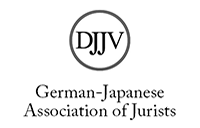Entwicklung und Hintergründe der Regelungen zur Corporate Governance in Japan mit einem Schwerpunkt auf der Reform von 2013
Abstract
SUMMARY
The contribution starts with an overview over the historical development of Japanese company law and thereafter analyses the pending reform of 2013. Originally, the law of stock corporations in Japan was based on German legal concepts. However, after the Second World War is was re-structured under the influence of Anglo-American law. Various scandals involving well-known companies led to further reforms aiming at an improvement of corporate governance and at creating a more flexible organizational frame for stock corporations. Thus in 2002/2005 the so called “company with committees” was introduced. This gave corporations the choice between a monistic and a two tier organizational structure. However, few companies opted for the new form so far. To further enhance corporate governance, the Legislative Council discussed in the context of the 2013 reform the introduction of a regulation to make outside directors on the boards of Japanese listed companies mandatory. Whereas some promoted this option, other were reluctant and proposed a comply or explain approach. In the end the Council opted for the second alternative and against a mandatory rule. In the future Japanese listed companies that do not elect outside directors to their boards will have to explain the reasons for this in their annual business report. The author is in favor of this outcome. Another feature of the 2013 reform is the creation of a “company with a controlling committee” as part of the board. This company form is different from the “company with auditors” as well as from the “company with committees” and is thus regarded as a third organizational form for stock corporations. Some of the powers of the nomination committee will be shifted to the controlling committee to enforce the supervision of directors. The introduction of this new form has been met with positive resonance so far.
(The Editors)






